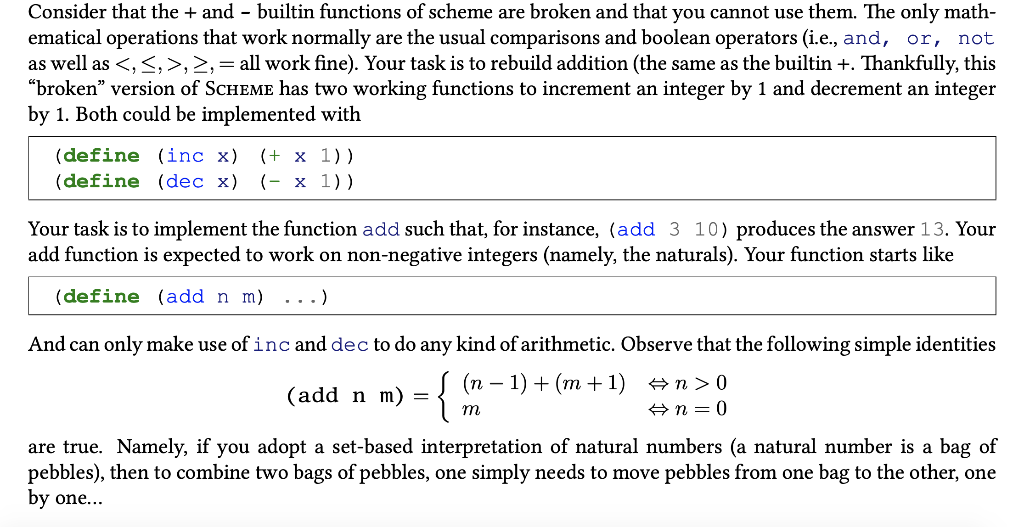Use Scheme to solve this

Consider that the + and - builtin functions of scheme are broken and that you cannot use them. The only math- ematical operations that work normally are the usual comparisons and boolean operators (i.e., and, or, not as well as ,2,= all work fine). Your task is to rebuild addition (the same as the builtin +. Thankfully, this broken version of SCHEME has two working functions to increment an integer by 1 and decrement an integer by 1. Both could be implemented with (define (inc x) (+ x 1)) (define (dec x) (- x 1)) Your task is to implement the function add such that, for instance, (add 3 10) produces the answer 13. Your add function is expected to work on non-negative integers (namely, the naturals). Your function starts like (define (add n m) ...) And can only make use of inc and dec to do any kind of arithmetic. Observe that the following simple identities an n> 0 (add :- 1) + (m +1) n m) on=0 { m are true. Namely, if you adopt a set-based interpretation of natural numbers (a natural number is a bag of pebbles), then to combine two bags of pebbles, one simply needs to move pebbles from one bag to the other, one by one... Consider that the + and - builtin functions of scheme are broken and that you cannot use them. The only math- ematical operations that work normally are the usual comparisons and boolean operators (i.e., and, or, not as well as ,2,= all work fine). Your task is to rebuild addition (the same as the builtin +. Thankfully, this broken version of SCHEME has two working functions to increment an integer by 1 and decrement an integer by 1. Both could be implemented with (define (inc x) (+ x 1)) (define (dec x) (- x 1)) Your task is to implement the function add such that, for instance, (add 3 10) produces the answer 13. Your add function is expected to work on non-negative integers (namely, the naturals). Your function starts like (define (add n m) ...) And can only make use of inc and dec to do any kind of arithmetic. Observe that the following simple identities an n> 0 (add :- 1) + (m +1) n m) on=0 { m are true. Namely, if you adopt a set-based interpretation of natural numbers (a natural number is a bag of pebbles), then to combine two bags of pebbles, one simply needs to move pebbles from one bag to the other, one by one







